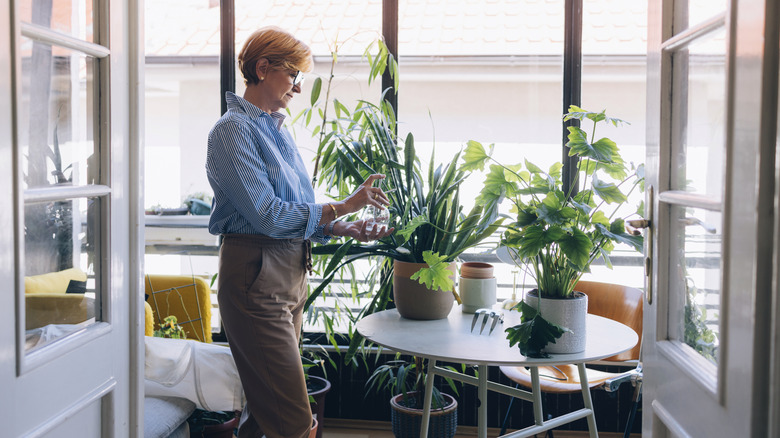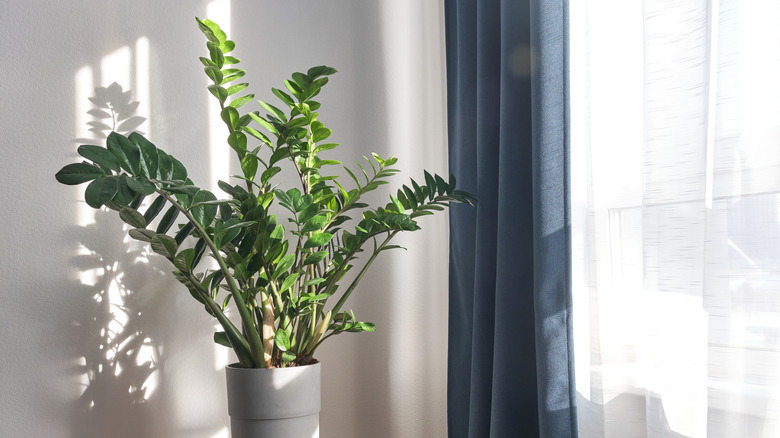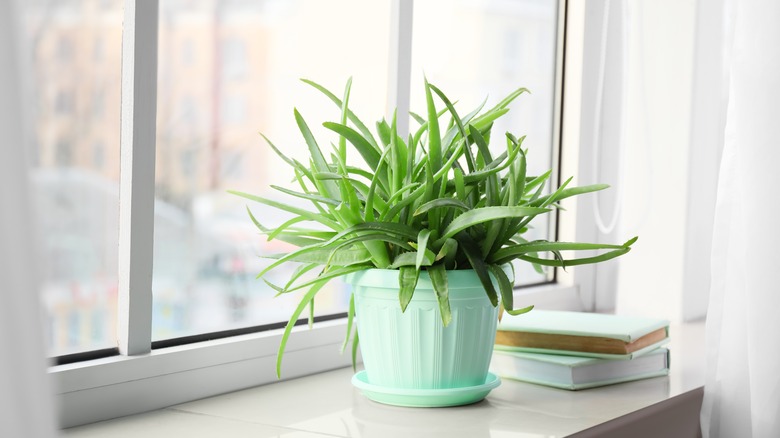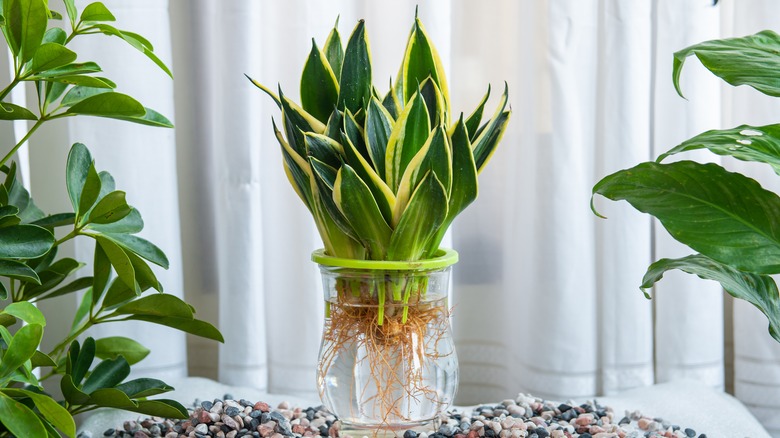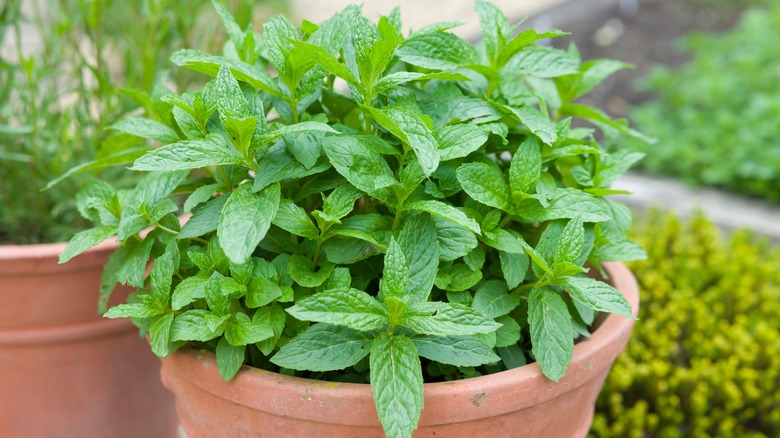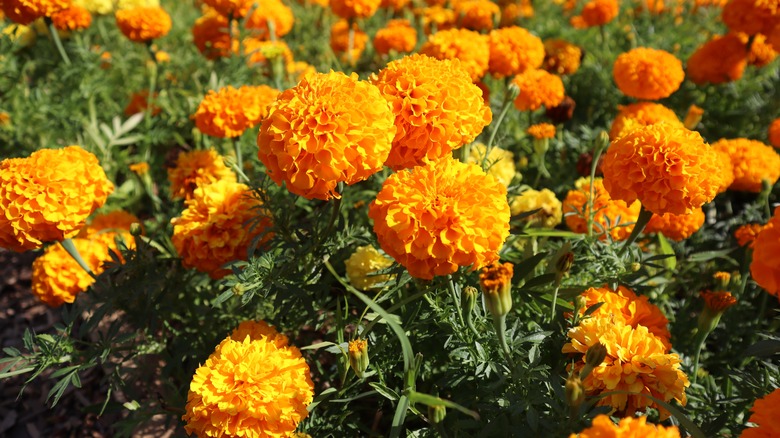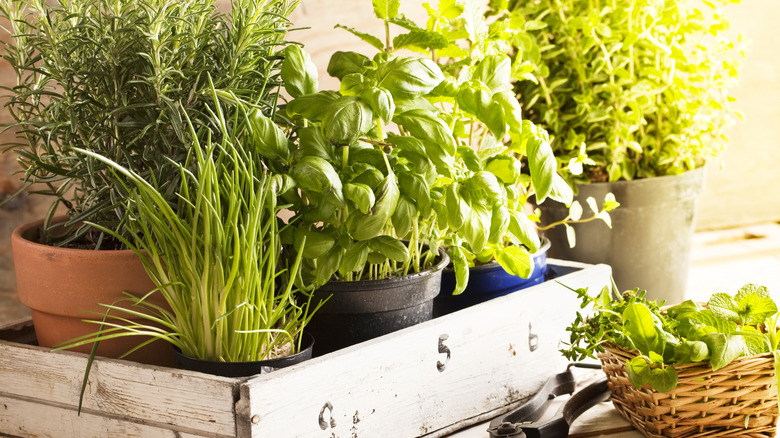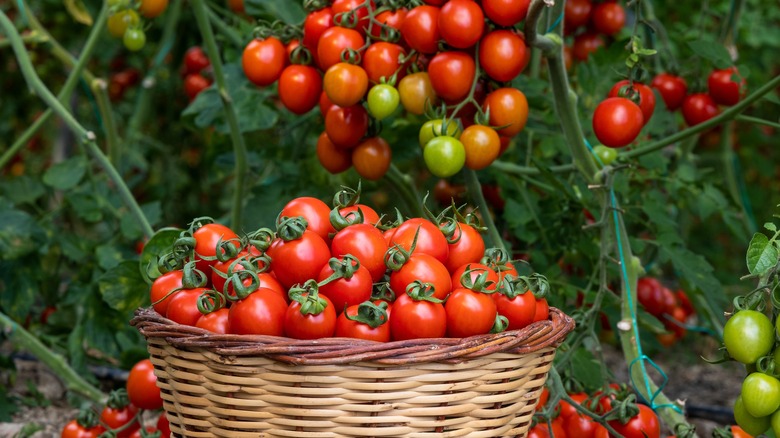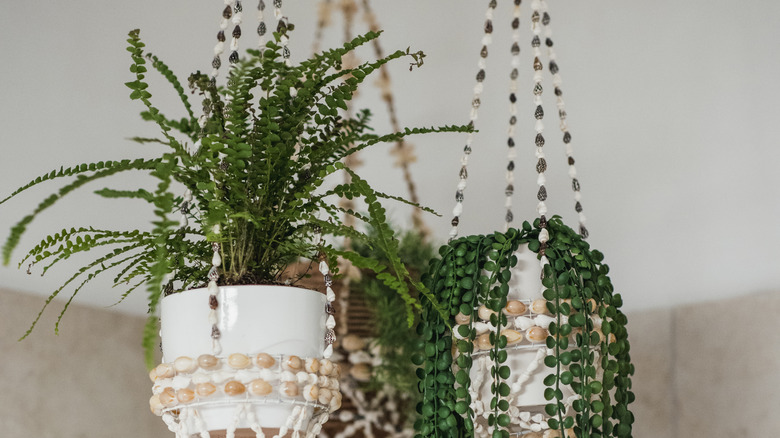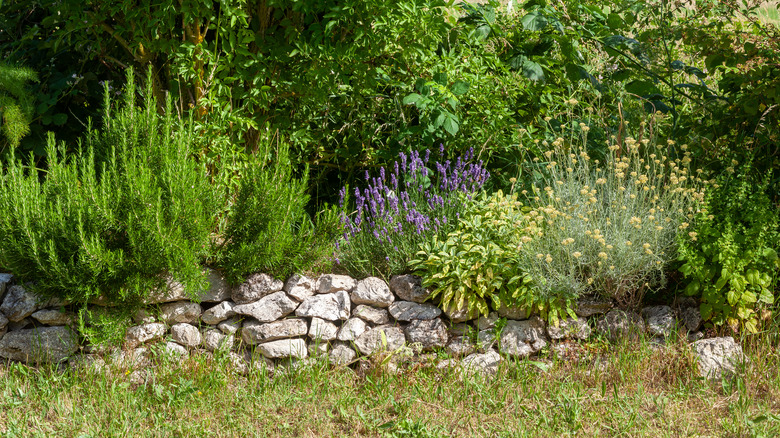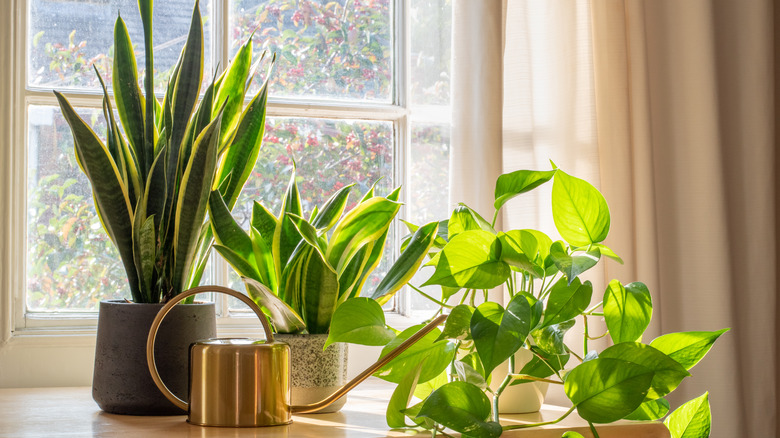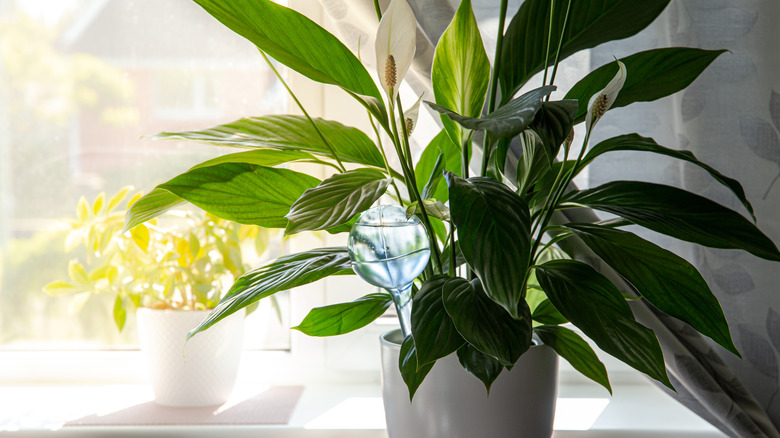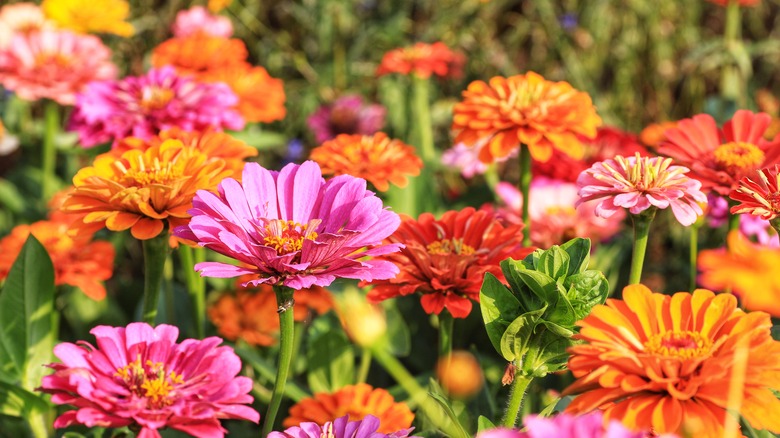Fuss-Free Plants That Are Great For Gardening Beginners
Cultivating your own garden is a rewarding yet intricate endeavor, especially for those donning a gardening glove for the first time. The allure of vibrant blooms, verdant foliage, and the prospect of nurturing your botanical haven is undeniably enchanting. However, the path to gardening success can be riddled with uncertainties and challenges, leaving beginners in a quandary about where and how to start.
Fear not, aspiring green thumbs! This comprehensive guide is your compass in the vast landscape of horticulture, offering a roadmap to gardening success without the customary trials and tribulations. We've handpicked a selection of botanical wonders — the unsung heroes of the plant kingdom — meticulously chosen for their resilience and beginner-friendly attributes.
Say goodbye to the apprehension that often accompanies cultivating your own oasis, and welcome a new era of gardening delight. We'll unravel the secrets behind creating a curated collection of low-maintenance, resilient plants, each chosen to turn your gardening aspirations into a reality, one leaf at a time.
The ZZ plant is virtually impossible to kill
The ZZ plant, scientifically known as Zamioculcas zamiifolia, emerges as an undisputed champion in the realm of resilient houseplants, making it an ideal choice for gardening beginners. Its exceptional ease of growth lies in its adaptability to a variety of environmental conditions (via Gardeners' World). This hardy plant is renowned for its tolerance to low light levels, allowing it to thrive in spaces where other plants might struggle. Moreover, the ZZ plant is forgiving when it comes to watering, as it can withstand infrequent hydration, making it perfect for those still mastering the art of plant care.
The ZZ plant's attractive and glossy, dark green foliage adds an aesthetic touch to any indoor space, providing visual appeal without the need for constant attention. Its thick, succulent-like stems store water efficiently, serving as a built-in reservoir during periods of neglect. This feature not only contributes to the plant's resilience but also makes it an excellent choice for individuals who may occasionally forget to water their green companions.
For gardening beginners, the ZZ plant becomes a reliable ally, offering an opportunity to cultivate an indoor garden without the anxiety of intricate care routines. Whether placed in a well-lit living room or a dimly lit office corner, the ZZ plant effortlessly thrives, showcasing the beauty of nature in a way that is both accessible and enjoyable for newcomers to the world of gardening.
Aloe vera is a beginner-friendly succulent
Aloe vera, heralded as a paragon of beginner-friendly succulents, stands out as an excellent choice for those venturing into the enchanting world of plant care. Its reputation as a resilient and undemanding succulent makes it a quintessential companion for gardening beginners. One of the key reasons why aloe vera is embraced by beginners is its minimal maintenance requirements.
Aloe vera's plump, fleshy leaves store water efficiently, enabling it to withstand periods of drought without losing its vibrancy, according to Lively Root. It also thrives in environments with indirect lights, making it adaptable to a range of indoor environments that don't receive direct sunshine. Additionally, Aloe vera is forgiving when it comes to watering, as it prefers to dry out between waterings, reducing the risk of overwatering — a common pitfall for newcomers to succulent care.
Beyond its resilience, Aloe vera offers more than just visual appeal. The gel within its leaves possesses various medicinal properties, adding a practical dimension to its allure. For those taking their first steps into succulent cultivation, Aloe vera proves to be a rewarding and educational introduction to the world of plants, combining aesthetic charm with ease of care in a single, verdant package.
The snake plant is resilient
The snake plant, recognized for its unwavering resilience, makes an excellent choice for gardening beginners. This hardy succulent, scientifically known as Sansevieria, boasts a reputation for being virtually indestructible, thriving under conditions that might challenge other houseplants. Its resilience is deeply rooted in its unique ability to adapt to various light levels, from bright, indirect sunlight to low-light conditions (via Fleur Living), making it a versatile addition to any indoor space.
What sets the snake plant apart as a beginner-friendly option is its ability to withstand irregular watering schedules. This succulent is well-suited for those who are still refining their watering routines, as it can endure periods of drought and prefers its soil to dry out between waterings. The upright, sword-like leaves of the snake plant not only add a touch of elegance to the surroundings but also contribute to its hardiness.
For gardening novices, the snake plant requires minimal attention while providing maximum visual impact. Its air-purifying qualities further enhance its appeal, making it an ideal choice for those seeking a resilient, low-maintenance plant that effortlessly thrives in various indoor conditions. The snake plant proves that cultivating a green haven can be both accessible and gratifying for individuals just beginning their botanical journey.
Mint practically grows itself
Mint, often heralded as the self-sufficient champion of herb gardens, practically grows itself, making it an absolute delight for gardening beginners. This aromatic herb, belonging to the Mentha genus, possesses a robust and vigorous nature that allows it to flourish with minimal intervention. Mint's reputation for ease of growth is attributed to its prolific spreading habit, sending out runners that effortlessly root in various soil conditions, which is why Apartment Therapy recommends growing it in its own container or pot, so it doesn't interfere with nearby plant roots.
What makes mint a standout choice for novice gardeners is its ability to thrive in both full sun and partial shade. This adaptability means that it can find a comfortable home in various garden settings, from sun-drenched herb gardens to partially shaded corners. Moreover, mint is forgiving when it comes to soil types, as it can flourish in well-draining soil with moderate moisture.
Beyond its low-maintenance growth, mint offers a myriad of culinary and medicinal uses, adding a practical dimension to its appeal. Whether you're cultivating it in a garden bed or a container, mint's hardy nature ensures a bountiful harvest, ready to elevate your culinary adventures or provide a refreshing twist to beverages. Gardening novices will find mint to be a charming and rewarding addition to their green repertoire, showcasing that cultivating flavorful herbs can be both effortless and enjoyable.
Cultivate foolproof blooms with marigolds
Cultivating foolproof blooms becomes an effortless endeavor with vibrant and resilient marigolds. These cheerful flowers, known for their dazzling hues and undemanding nature, are a boon for gardening beginners seeking a splash of color in their outdoor spaces. Marigolds, belonging to the Tagetes genus, have earned their reputation as robust annuals that thrive in various soil conditions and climates.
What sets marigolds apart as a foolproof choice for bloom enthusiasts is their adaptability to both full sun and partial shade, making them versatile additions to gardens, borders, or containers. Their ability to withstand a range of soil types, from well-draining to clayey soils, adds to their user-friendly nature. Marigolds are also known for their pest-repelling properties, serving as natural guardians for nearby plants, according to Gardenia.
These resilient flowers don't demand meticulous care; they flourish with moderate watering and can withstand occasional neglect. With their cheerful blossoms in shades of orange, yellow, and red, marigolds add a burst of color to gardens, attracting pollinators and providing a visual feast for admirers. For those taking their first steps into the world of gardening, marigolds stand as a foolproof choice, promising delightful blooms without the fuss, and a vibrant gateway to the joys of cultivating a blossoming garden.
Chives and rosemary are simple herbs
Cultivating a home herb garden becomes a straightforward and rewarding experience with the inclusion of chives and rosemary, two exceptionally user-friendly herbs.
Chives, with their slender green stalks and mild onion flavor, are the epitome of simplicity for herb enthusiasts. Chives require minimal maintenance, benefiting from regular watering and occasional fertilization. These perennial herbs thrive in well-draining soil and prefer a sunny spot in the garden. However, their adaptability extends to container cultivation too, according to Gardeners' World.
Rosemary, an aromatic and resilient herb with needle-like leaves, is a testament to simplicity in herb cultivation. This perennial herb flourishes in well-drained soil and basks in abundant sunlight, making it an excellent candidate for garden beds or container gardens (via Savvy Gardening). One of rosemary's standout features is its drought tolerance; it prefers to dry out between waterings, making it a perfect match for gardening beginners still honing their watering routines. Beyond its culinary uses, rosemary's fragrant presence and distinctive flavor make it a captivating addition to both kitchen and landscape, proving that cultivating herbs can be both straightforward and aromatic.
Hostas are the perennials that keep on giving
Hostas stand as the perennial champions in the gardening realm, truly embodying the adage that they are the plants that keep on giving. These resilient and versatile perennials, with their lush, broad leaves and a variety of striking colors, are a staple for any garden seeking enduring beauty.
Hostas are celebrated for their ability to thrive in various light conditions, from full shade to dappled sunlight, showcasing adaptability that few plants can match (via My Perfect Plants). Their low-maintenance nature makes them perennial favorites among gardening enthusiasts, especially those just beginning their horticultural journey. Once established, hostas require little more than regular watering and occasional fertilization, yet they reward gardeners with an abundance of foliage that adds texture and elegance to any landscape.
What makes hostas truly stand out is their enduring nature. These perennials not only return year after year with minimal effort but also have the remarkable ability to expand, creating larger clumps and offering the opportunity to divide and propagate for even more garden beauty. Whether used as ground cover, border plants, or as focal points in shaded areas, hostas exemplify the concept of perennials that keep on giving, providing a reliable source of visual delight for seasoned gardeners and novices alike.
Cherry tomatoes are low maintenance
Cherry tomatoes offer a delicious and hassle-free addition to the home garden. These petite, flavorful tomatoes, bursting with sweetness, are renowned for their ability to thrive with minimal intervention, making them an ideal choice for gardening enthusiasts seeking a bountiful harvest without the complexities.
The low-maintenance nature of cherry tomatoes is attributed to their adaptability to different growing conditions. Whether planted in garden beds, containers, or hanging baskets, these versatile tomatoes prove to be resilient, requiring little more than well-draining soil, regular watering, and access to sunlight. Their compact size makes them suitable for small spaces, and, according to Espoma, they often continue producing fruit prolifically throughout the growing season.
Cherry tomatoes are forgiving when it comes to occasional neglect, showcasing their hardiness and resilience against common gardening pitfalls. With a little water, some sunlight, and perhaps a light application of fertilizer, these vibrant and bite-sized fruits practically care for themselves. Whether you're a seasoned gardener or just starting your green journey, cherry tomatoes promise a delectable and low-maintenance harvest that adds a burst of flavor and color to your gardening experience.
Ferns are shade-loving champions
Ferns add an enchanting touch to gardens that bask in the cool embrace of shaded spaces. Renowned for their lush, feathery fronds and graceful demeanor, ferns are a go-to choice for those seeking botanical beauty in areas where sunlight is a precious commodity.
The shade-loving nature of ferns makes them versatile and adaptable to various garden settings, from woodland landscapes to sheltered nooks in urban gardens. Their preference for filtered or indirect light positions them as ideal candidates for areas where direct sunlight is limited (via HGTV). Ferns are not only adept at thriving in shaded environments but also contribute to the creation of lush, textured greenery that elevates the aesthetic appeal of any garden.
What makes ferns true shade-loving champions is their ability to flourish with minimal maintenance. Once established in well-draining soil with consistent moisture, ferns require little more than periodic watering and occasional fertilization. Their resilience against common pests and diseases further enhances their reputation as low-maintenance, shade-loving allies in the gardening realm. Whether adorning the corners of a shaded patio or creating a woodland oasis, ferns showcase that a touch of elegance and tranquility can thrive in the shadows, making them the quintessential champions of shaded gardens.
Sage and lavender are drought-tolerant wonders
Sage and lavender emerge as the true marvels of drought-tolerant herb gardening, showcasing their remarkable resilience and aromatic allure even in arid conditions.
Sage, with its silvery-green leaves and earthy fragrance is celebrated both in culinary and medicinal realms, thrives in well-drained soil and is particularly adept at enduring periods of dryness. Sage's ability to conserve water in its sturdy leaves, coupled with its preference for full sunlight, makes it an ideal candidate for regions with limited rainfall (via Gilmour). Once established, sage requires minimal watering, allowing it to flourish in gardens with water-wise practices. Beyond its culinary contributions, sage's hardy nature transforms it into a resilient and aromatic companion for herb enthusiasts navigating dry climates.
Lavender, with its fragrant spikes of blossoms and silvery foliage, stands out as another drought-tolerant wonder in the herb garden. Renowned for its resilience in hot and dry conditions, lavender thrives in well-drained, sandy soils and revels in full sunlight. What makes lavender a true marvel in water-wise gardening is its ability to withstand drought once established (via Garden Design), making it a perfect choice for gardens where water conservation is paramount. The aromatic oils within its leaves and flowers contribute not only to its iconic scent but also to its ability to endure periods of limited water availability. Lavender's enduring beauty and adaptability make it a standout choice for herb gardens in regions where the call for drought-tolerant wonders is particularly resonant.
Air plants don't even need soil
Air plants, also known as Tillandsia, redefine the conventional rules of plant care by thriving without the need for soil. These unique botanical wonders are true marvels of adaptability, making them a fascinating and low-maintenance addition to any plant lover's collection.
What sets air plants apart is their ability to absorb water and nutrients through specialized trichomes on their leaves, eliminating the requirement for traditional soil, per Air Plant City. This characteristic not only makes them visually distinctive but also grants the freedom to showcase them creatively in various settings. Whether nestled in decorative containers, suspended in air plant holders, or adorning driftwood, air plants effortlessly defy the need for conventional planting mediums.
The absence of soil simplifies their care routine, as air plants only need periodic misting or brief immersion in water to thrive. Their adaptability to different environments, from humid to arid conditions, further solidifies their status as hassle-free companions for both experienced plant enthusiasts and those new to the world of greenery. With their captivating forms and soil-free lifestyle, air plants offer a delightful and unconventional way to experience the joys of nurturing nature.
Spider plants almost sprawl on their own
Spider plants, recognized for their cascading foliage, seem to defy gravity as they almost sprawl on their own, making them a delightful and low-maintenance choice for both novice and seasoned plant enthusiasts alike. With arching leaves that gracefully extend from the center of the plant, spider plants add a touch of elegance to any space while requiring minimal intervention.
What makes spider plants almost self-sufficient is their innate ability to produce offshoots, known as "pups" or "babies," that dangle from long, slender stems (via Plantura Magazine). These plantlets can be easily rooted in soil or water, allowing the plant to effortlessly multiply and create a lush, sprawling display. This characteristic not only adds visual appeal but also offers the opportunity for propagation, making spider plants an ideal choice for those looking to expand their indoor greenery.
Beyond their propagation prowess, spider plants are undemanding when it comes to care. They tolerate a variety of light conditions, including indirect sunlight, and can adapt to different watering schedules. Their ability to thrive in well-draining soil further enhances their reputation as easygoing companions, showcasing that the captivating charm of spider plants often extends beyond their gracefully arching leaves to their propensity to almost sprawl on their own, creating a verdant and visually captivating display in any living space.
Peace lilies won't stress you out
Peace lilies, renowned for their elegant white blooms and lush green foliage, won't stress you out, making them a serene and undemanding addition to any indoor oasis. These resilient houseplants, scientifically known as Spathiphyllum, are cherished for their air-purifying qualities and their ability to thrive with minimal care.
Peace lilies are adaptable to low-light conditions (via Miracle Gro), allowing them to flourish in spaces where natural sunlight is limited. Their glossy leaves and graceful white spathes contribute to a tranquil atmosphere, creating a visual sanctuary for plant enthusiasts. Peace lilies also boast an efficient water indicator — drooping leaves serve as a gentle reminder to provide a sip of water, preventing overwatering or underwatering stress.
Low-maintenance by nature, peace lilies are forgiving of occasional neglect and can withstand fluctuations in humidity. Their straightforward care routine includes keeping the soil consistently moist and an occasional wipe-down of their leaves to remove dust, ensuring a stress-free experience for both experienced plant enthusiasts and those new to the joys of indoor gardening. With peace lilies, you can revel in the beauty of nature without the added stress, creating a harmonious and tranquil living space.
Zinnias provide quick gratification
Zinnias, those vibrant and cheerful blooms, offer quick gratification, making them an ideal choice for those seeking an instant burst of color and joy in their garden. With a remarkable ability to germinate and bloom rapidly, zinnias are the go-to annual flowers for gardening enthusiasts looking for swift and satisfying results.
What makes zinnias stand out is their short time from seed to bloom, allowing gardeners to witness the transformation from seedlings to a riot of vivid flowers in a matter of weeks. Their quick growth cycle not only makes them a perfect choice for spontaneous garden projects but also provides near-instantaneous rewards for those who crave the visual delight of blooming flowers.
Zinnias are versatile, thriving in various soil types and requiring minimal care. They embrace full sunlight with enthusiasm, showcasing their dazzling array of colors and shapes. Whether planted in garden beds, containers, or as cut flowers, zinnias deliver immediate gratification, turning any space into a vibrant and lively haven. With zinnias, the joy of gardening is not just about the journey — it's about the rapid and delightful destination they provide, offering a visual feast that unfolds almost as quickly as the bloom itself.
Cacti are a time-honored option for a reason
Cacti, those iconic and resilient desert denizens, stand as a time-honored option for a reason. Their enduring popularity in the realm of indoor plants is rooted in their unique charm, adaptability, and the ease with which they flourish in a variety of environments. These succulents have earned their status as classic choices for both experienced plant enthusiasts and those new to the world of greenery.
What sets cacti apart is their remarkable ability to thrive with minimal water, making them well-suited for those who may not have a green thumb or those with busy lifestyles. Their distinctive shapes and textures add a touch of sculptural elegance to any space, turning them into living works of art.
Cacti's resilience against neglect and their capacity to withstand dry conditions make them a timeless and reliable choice for plant enthusiasts. Whether displayed as a solitary statement piece or grouped in a charming cactus garden, these enduring succulents continue to be a time-honored option, offering a touch of the desert's beauty and a testament to the enduring appeal of these iconic plants.
